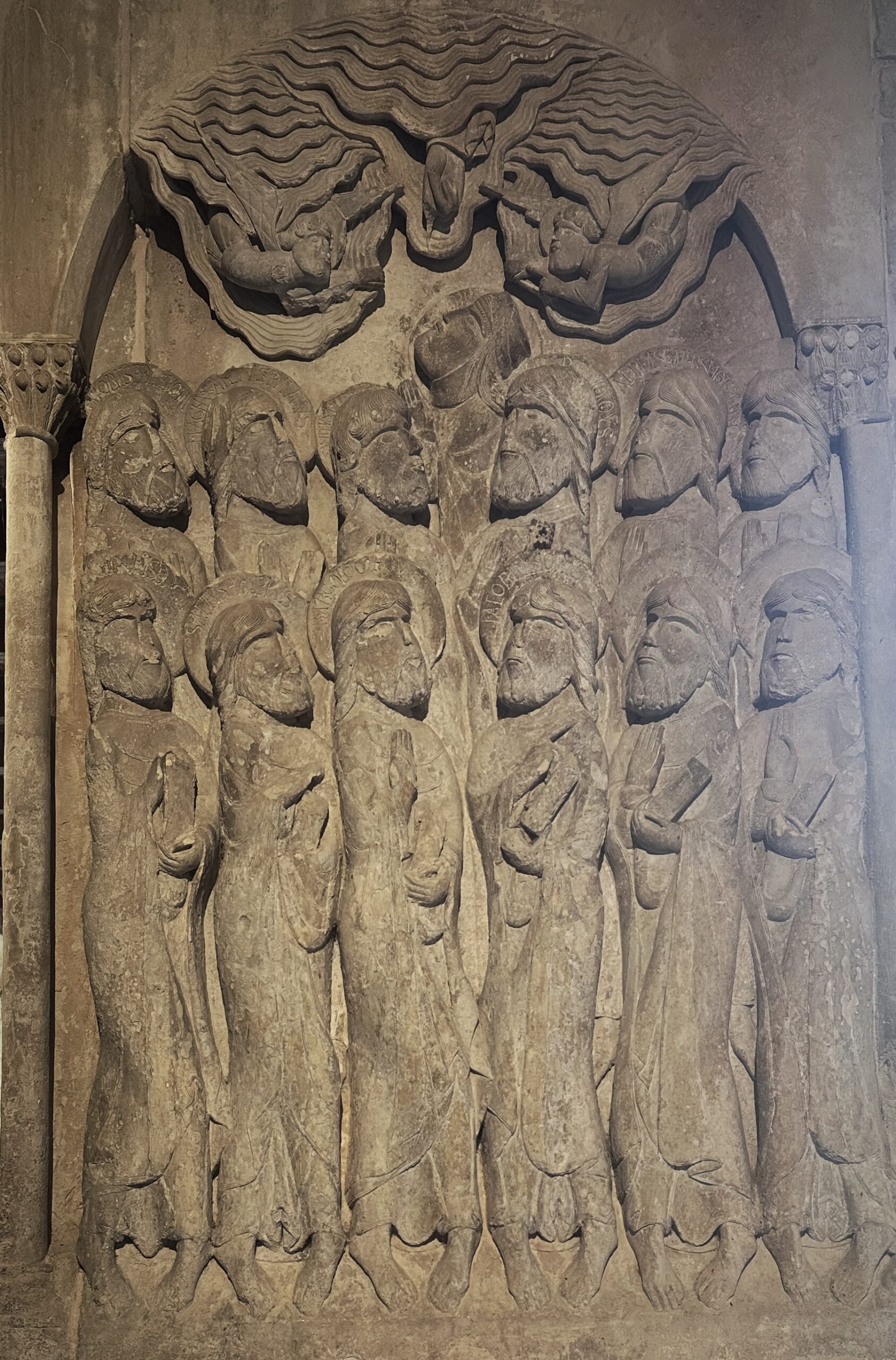
“Pentecost”, late 11th century,, Cloister, Abbey of Santo Silos de Domingo, Burgos, Spain. This relief showing Pentecost should really be viewed alongside the relief of the Ascension. They are o the same pillar in the cloister of Santo Domingo de Silos. To see the pillar with both reliefs visit, https://scotland.op.org/ascension-at-santo-domingo-de-silos/ . In the Ascension relief two angels are pulling up the clouds to hide Jesus. Here two angels part the clouds to reveal the hand of God in descent. The cloud signifies the presence of God as in the Old Testament, but the sculptor has given it a water-like appearance, perhaps to suggest the sacrament of baptism because Jesus called Pentecost “baptism with the Holy Spirit” (Acts 1:5). In the Ascension relief, the Apostles all look upwards, but not here. They listen to the mighty wind. Only Mary looks up welcoming the Spirit which she had already received when Jesus was conceived in her womb. The hand of God replaces the tongues of fire. St Augustine wrote that the gospels show that the finger of God signifies the Holy Spirit, who enabled the apostles to participate in the resurrection. Isidore of Seville developed this same idea. It is unusual to show the Apostles standing at Pentecost. But for the monks at Silos standing was the posture only of prayer during Eastertide and also the posture of resurrection. Isidore of Seville wrote that standing at prayer during Eastertide was a sign of reverence to the resurrection. Others said it was a sign of hope in the resurrection to come. In her work on Santo Domingo de Silos, “Palaces of the Mind” , Elizabeth Valdez del Álamo links the hope of resurrection with the burials of monks in the cloister. It would seem then that the sculptor wanted the monks to ponder the close link between Pentecost and Resurrection celebrated at Easter 50 days before.

The Catholic Chaplaincy serves the students and staff of the University of Edinburgh, Edinburgh Napier University and Queen Margaret University.
The Catholic Chaplaincy is also a parish of the Archdiocese of St Andrews and Edinburgh (the Parish of St Albert the Great) and all Catholic students and staff are automatically members of this parish.